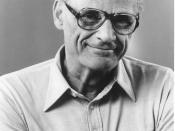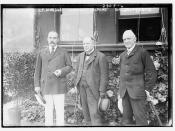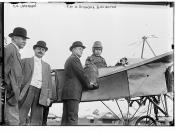In March 1947 the House of Un-American Activities Committee (HUAC) came to Hollywood to expose communist influence in the film industry. HUAC was invited to Los Angeles in 1947 by the Motion Picture Alliance for the Preservation of American Ideals, an organization whose motto was "co-existence is a myth and neutrality is impossibleâ¦anyone who is not fighting Communism is HELPING Communism." By 1951, HUAC had obtained more then 300 names of communists and communist sympathizers. The major studios began blacklisting actors, directors, technicians, and screenwriters making it virtually impossible for them to find work. Because many of the people that were accused of being communists were writers, performing artists, it also dramatically affected the postwar era's films.
Monogram Studios drop plans of shooting a movie on Hiawartha, whose efforts to achieve peace among the Iroquois might be interpreted as a boost to Communist peace propaganda. Director George Stevens toned down the social analysis and highlighted the roman in A Place in the Sun (1951).
And even cut most of the supporting actresses major scenes once she took the Fifth Amendment. The studios also began to produce explicit anti-communist films. These movies did not have large budgets or major stars and usually ended up as second features on double-bills. The stream of B-Grade movies exposed the dangerous menace of communist subversion. These films showed that Hollywood took seriously the growing fear of domestic subversion. Runaway Daughter a re-released version of the movie Red Salute, was a story a college girl getting too friendly with a campus radical, then sent away to Mexico where she meets an all-American border patrolman who quickly wins the girls heart. The campus radical is sent packing by the patrolman and the student body. The advertisement for this film reads "COMMUNIST ACTIVITES UNCOVERED IN...


